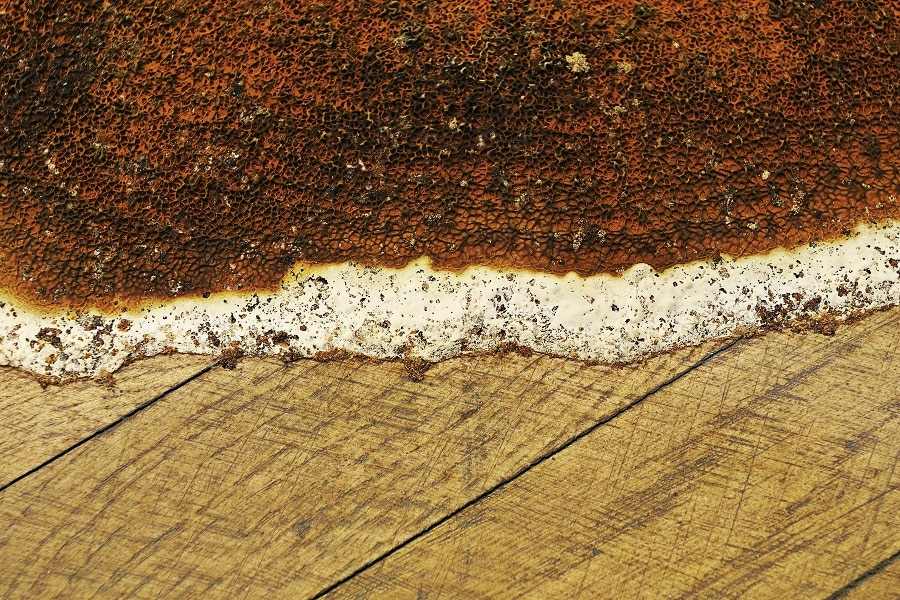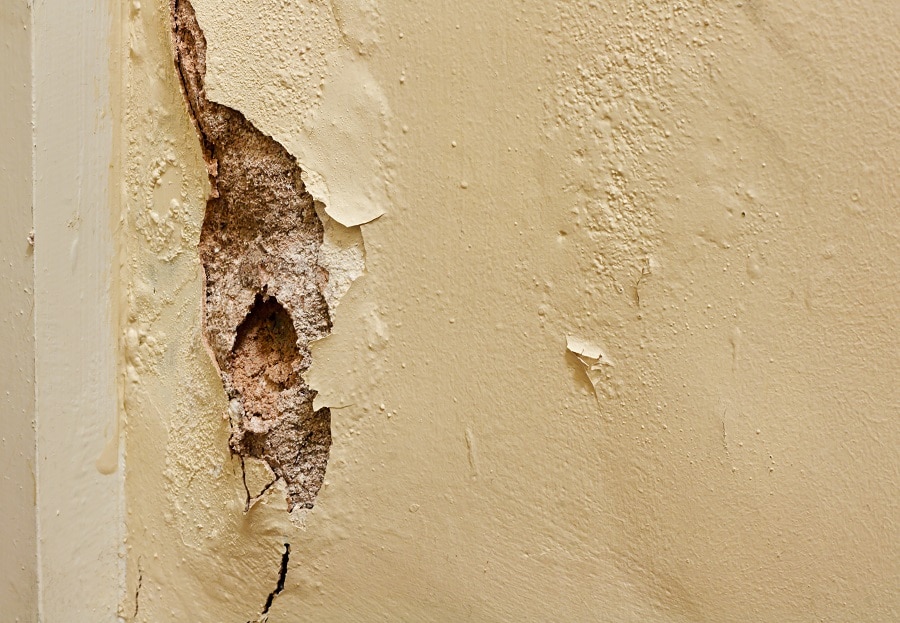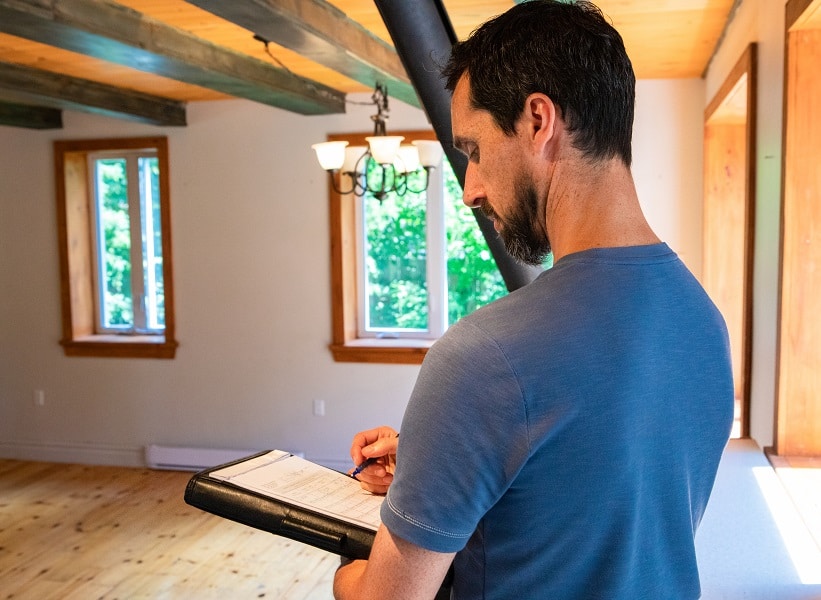What is dry rot?
Dry rot is the general word used for wood-decay fungus. The wood is broken down by fungi, as the Mycelium decomposes the wood, resulting in fine dust particles that are made of sawdust and wood chips, forming colonized areas that are referred to as fungal blooms. Dry rot is caused by fungal spores which require a suitable place to land and start their colonies before spreading through the underlying wood. Many of these spores can be found in soil and old wood already affected by dry rot.
It also means that dry rot cannot live in so-called “humidified” lumber that is kept at 15% moisture with a wetted surface. Dry Rot is much more serious than Wet Rot, and often attacks wood that appears sound, with the fungus hidden inside. It usually happens where you are not looking They can be under your floorboards, behind the plaster or in your loft. As a homeowner, it’s a good idea to understand the telltale signs of dry rot so you can act fast.
Our Guarantee
- upto 30 year guarantee
- customer focused team
- 20 years combined experience
- portfolio of satified customers
- attention to detail
- Construction line accreditation
- public liability insurance
- CHAS accreditation
What is the difference between dry rot and wet rot?
Dry rot and wet rot are two different kinds of fungus that can destroy wood if left untreated. One of the biggest differences is that dry wood requires significantly less moisture to harbor the activity that leads to rot. Contrarily, dry rot does not spread as easily as wet rot. This is so because Dry Rot fungus thrives even in eco-friendly woods like bamboo and uses the capillaries within the timber to grow. Dry rot is extremely destructive and spreads quickly through a house, even retaining its ruinous effects if the room has been previously treated for damp or wet rot. Wet rot fungus, on the other hand, happens more frequently but is less serious, usually rotting is limited to areas where the wood becomes and stays wet.
Call Our Sussex Damp Experts team now for quote, consultation and advice:
Call on 01273 257 765.
What are the causes of dry rot?
Dry rot is caused by different species of fungi. Serpula Lacrymans is the most popular in the Chichester. If you don’t fix it soon, it could cause serious damage to your home. This would damage the integrity of your structural wood, and thus the structural integrity of your whole residence. Dry rot hits when you have too much moisture in your timber. This will attract the fungus that will use this moisture to extract nutrients. The expression “dry rot” is used to contrast between “wet wood” and “dry wood rot.”
Wet wood feeds on dry rot. While fungal spores need over 30% wetness to generate hyphae after this, these hyphae only need 20% wetness to survive. This hyphae can develop into a fungal body known as mycelium, which can disperse and find more wood in brick and stone. Hemicellulose, cellulose, and H2O will be removed from your timber by this fungus, only leaving a weak “skeleton” structure of the original wood. You need an expert to examine your property and determine whether your rotting timber is a result of dry rot or a different type of fungus. This is very important as the treatments for these damages will differ depending on the exact cause.

The dangers of dry rot in Chichester
Dry Rot Effect on your Property
Dry rot can be highly detrimental to the integrity of your home. Dry Rot will slowly and silently break down the structural timber of your property. Extreme conditions may cause your home or appliances to fail. Dry rot does not strike your brick or stone, it just moves through it. This is why regular checks are important.
Dry Rot can cause extensive damage, and it is vital that you get to it as soon as possible. When fungus is evident, you need to call a restoration expert right away to prevent mold growth from worsening any damage that may be apparent. If you’re worried about dry rot, an inspection from our expert team can help you avoid major problems in the future.
Dry Rot Effect on Your personal health
It’s not the disease that causes dry rot that is dangerous. Dry rot is a fungus that can be harmful to your health if you allow it to occur. This is especially precarious for the elderly, children and anyone with respiratory conditions such as asthma.
What are the Warning Signs of Dry Rot?
The earlier you discover dry rot, the less time and money you’ll need to spend treating it and initiating remedial works. If any of these signs and symptoms are present, a formal evaluation is recommended.
-
The beginning of the dry rot cycle
Spores of dry rot are transported by the wind. The insect cuts small holes into the wood and eats the sap that comes out. When they feed on it, they will then germinate and create hyphae, if the timber is giving them enough nutrients to do so. Spider web-looking collections called mycelium will join up as the hyphae grow and feed. Mycelium is white or grey This mycelium can also stretch into your properties mortar, bricks and plaster to try and reach more timber.
-
Your timber is damaged.
When dry rot is affecting your timber, it will become brittle and dry. This could lead to the collapse of your timber. You will probably note the dry rot blacken the color of your wood. Cuboidal cracking can be caused by dry rot. The pressure of water can cause timber boards to break up into shapes around 50 mm in width, a phenomenon called cuboidal cracking. The fungal deterioration will also spread further into the wood, causing hyphae the white fungal growth. Also known as dry rot, hyphae is a common symptom of dry rot.
-
Your timber will smell.
If you smell a strong, fungal, dank and musty odour in your timber, it is likely to be affected by dry rot. This can happen even though you can’t see an epidemic of dry rot. Just because there is a smell, however, does not mean that dry rot is present.
-
Your timber will have fungus bodies on it.
Dry rot is the most noticeable kind of wood rot and one of the final stages of fungal attack. Those cute little mushroom-like fruiting bodies can start joining themselves with your wood. As the timber dries out, the fungus inside can no longer feed off the timber, in order to survive, it pumps its spores out to infect more wood.
-
Your timber will have spore dust.
Spores related to dry rot do not just occur in timber affected by dry rot. However, if splotches of dust rusty color accompany dry rot spores, it can be a sign of dry rot. In the final cycle of the dry rot, fertile bodies deliver this spore dust.
Dry Rot Treatment in Chichester

A dry rot attack would not happen until the moisture level is over 20 percent. The first prevention step to eradicating the presence of the fungus is the monitoring of moisture levels in your property. Then the moisture levels will be under your control. For your dry rot treatment, meet a professional.
Sussex Damp Experts can help you with the removal of infected timber and any remedial work. A professional should remove any infected timber. A professional damp proofing expert has the knowledge of the exact treatment. Some treatments are injected into the timber, others coat the surface of the timber. There are also several preventative treatment options available. These chemicals require specific concentrations and can have unpleasant side effects if inhaled or injected accidentally.
Your timber may require Boron roads injection from a professional. It’s a well known fact that Boron is a lethal material, that’s why we always make sure all of our damp proofing experts wear the right safety clothing. With our specialist team at damp proofing, we will be able to find any issues with dry rot and assess the extent of the issue. Dry rots can be a severe issue and need to be treated right away. If dry rot is not treated right away, it will spread throughout your property and cause real damage. Our high-performance products and extensive experience allow us to efficiently address your damp proofing problems.* Please don’t waste time. Call 01273 257 765 for today’s free survey and successful care if you suspect you have a problem with dry rot.
How can you prevent dry rot damage in Chichester?
The first step of treating dry rot is prevention. A dry rot infestation will occur in any wooden areas of the house that traps ample water and is subject to moisture/moisture ingress. Here are some of the behaviors that would prohibit them from forming: It is your responsibility to ensure that there are no leaks in your house. Facilitate sufficient ventilation.
Correctly ventilate the attic and insulate it. Correctly ventilate crawl spaces. Stop dirt and moisture from getting into your basement or crawlspace. To ensure the water is correctly guided, check all flickering walls and roofs. Maintain clear sinks and downspouts. If a “wet” system is used, search for the filling/heating leaks. Owing to the humid conditions needed for dry rot fungus to be fed and germinated, the easiest way to reduce the possibility of dry rot is to decrease moisture levels. If you have a leak, plugging the leak can help reduce further damage to the house.
Speak to a Dry Rot specialist in Chichester
We are equipped to deal with any damp proofing or dry rot problems affecting your property or home. We will perform a full damp survey of the property and give you a free estimate before we start any work. For some years, we have assisted thousands of Chichester homeowners with their damp problems, and we will support you as well. Contact us on 01273 257 765 for a free quote and survey. A trained professional can examine the area to identify the source of your water damage, and recommend a solution. This encourages us to provide unbiased guidance about the sort of care you require.

All of our surveyors are qualified and can identify everything, including the solution, from Dry Rot to moisture input, and provide you with an affordable price for any remedial work. Dry rot is very destructive and can quickly spread through a home causing an irreversible amount of damage to the entire house, it is essential to reach us immediately. Sussex Damp Experts offers fast, professional and affordable support to help with dry rot problems affecting your home,Call us now on 01273 257 765 for help.
FAQ
Should dry rot be restored or replaced?
A certain level of dry rot can be repaired, but whether the damaged areas provide the house with structural stability, such as beams and joints, or even flooring, it is not recommended. Replace the wood in such a situation instead of repairing it. Whether you restore or rebuild the wood, it is better if you avoided the conditions that caused the rot to flourish in the first place or risked it coming back. Your roof leaks, broken gutters, or downspouts, plumbing leaks or insufficient ventilation should be inspected when considering a roof moisture accumulation You may consult a specialist to find and repair the problem.
Will you be able to treat my Dry Rot problem effectively?
With our expertly trained surveyors and specialists, a dry rot problem can be treated, rectified, and your timber can be protected for the future.
How do I discover how far Dry Rot has spread?
If you have traced the dry rot fungus quickly or not, a professional will identify the source of the problem. They will be able to trace the fungus in the different masonry and plaster from which it has spread.
How much can dry rot widen?
Dry rot spores can spread in anyplace with the right environmental settings. The reason is that they are carried in the atmosphere. If your timber has a moisture content of around 20%, and if it is in the open air, these conditions are attractive to dry rot fungus. This suggests that fungus groups can disperse to multiple materials. If dry rot is spreading across masonry and plaster, and if it reaches more timber to feed off where the timber is moist. It can widen further. Dry rot fungus needs five things to survive: the right temperature, drive rot spores, moisture, oxygen, and the food source. In any home in Brighton most of this is present.
Will dry rot stretch?
What should I do to control dry rot?
First identify the reason for your timber moist before solving it. A different treatment shall be given if the reason for your timber moisture is outside.
What are the effects of living dry rot unchecked?
Dry rot is the most insidious form of moisture that can infest property and cause permanent damage to the building if left untreated. Sometimes, once the harm is already done due to the places in which the problem is likely to be the presence of dry rot does not come to light.
Is dry rot stringent?
Dry rot can be particularly common in wooden properties, so it is essential that early signs of dry rot are identified before the damage becomes too severe.
How am I meant to know if I have dry rot?
A timber survey will assess how your timber is affected by being exposed to moisture. Later on, fruiting bodies and mycelium will be noticeable in the drive rot life-cycle.
Where can dry rot grow?
Dry rot attacks and rots timber that’s been in contact with water for a long period of time. Although it can often be mistaken for other problems in its early stages, it is important to seek advice. In every structure, both old and new, dry rot can grow. The reason being that it is caused by moisture and wetness that happen anyplace. Dry rot can be caused by leaks or weather, meaning the type of property does not affect it.




